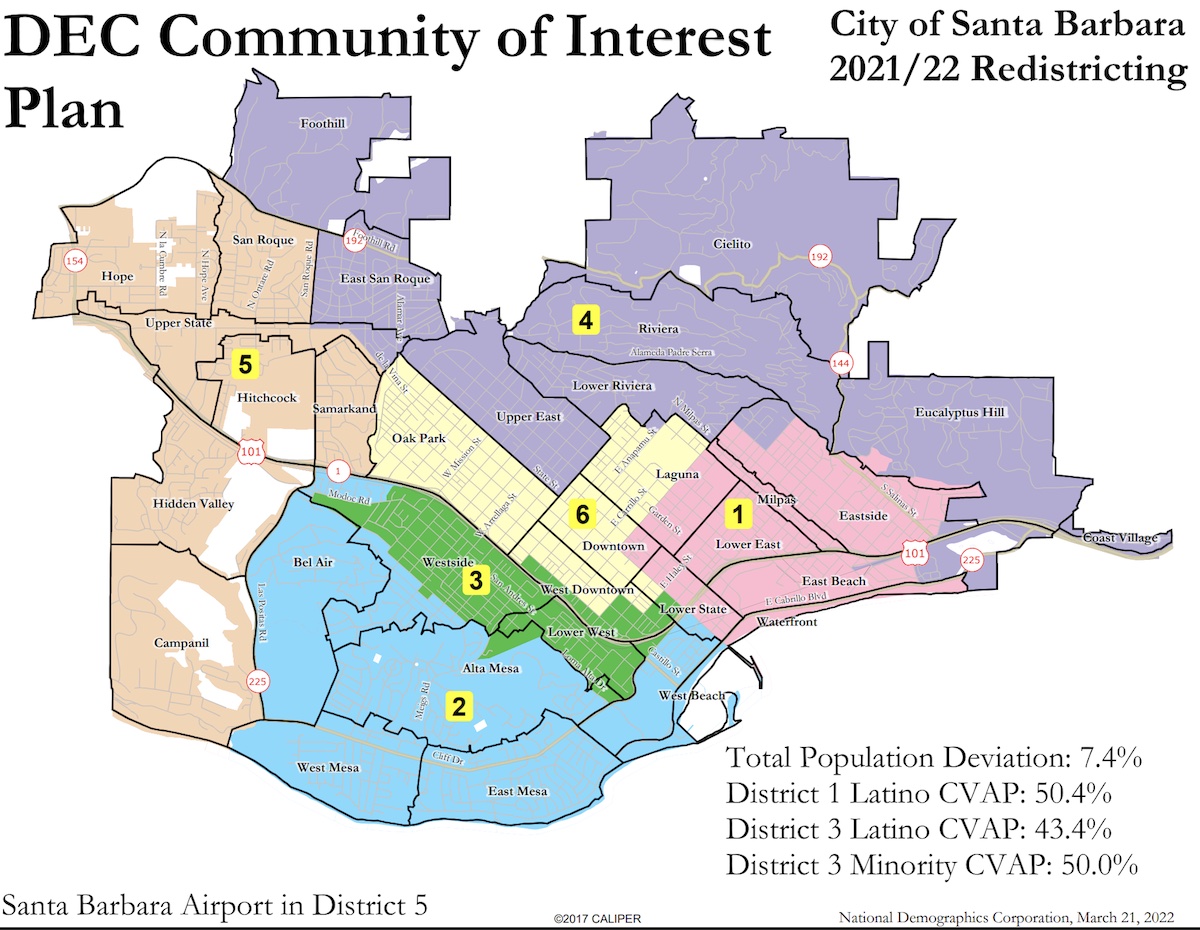Santa Barbara’s New Electoral Districts Explained
The Problem with Keeping Minority Voting Districts When Latinos Are Leaving the City

When Santa Barbara moved to district elections in 2015, each district was drawn with painstaking care to ensure each would reflect the community that lived there while maintaining two “majority minority” voting districts and an even distribution of population.
But when the latest census survey results came back, the city was confronted with a problem: The Latino population, particularly in the Westside’s 3rd District, had started to fade since 2010, rendering the current boundaries obsolete and outside the law. Enter the Independent Redistricting Commission, made up of retired judges Melinda Johnson, Elizabeth Allen White, and Abraham Khan and charged with the tricky task of drawing a new map that would still have two ethnic-minority voting districts and fix the problem of an 18.5 percent population deviation.
After seven months of public hearings and coordination between the commissioners, city staff, and community members, a map was selected that was drawn by the District Election Committee using the collected input from these hearings. The map, called the “Communities of Interest” map, was unanimously approved by the City Council on Tuesday.
“The map itself is very similar to what our current districts are,” said Brandon Beaudette, senior assistant to the city administrator. He was one of five city staff members who worked with the commissioners, along with Deputy City Attorney Michelle Sosa-Acosta. Beaudette said the “number one” priority for the new map was to bring the population deviation back below 10 percent. With the approved map, the deviation is at 7.4 percent.
Sign up for Indy Today to receive fresh news from Independent.com, in your inbox, every morning.
Councilmember Kristen Sneddon sat in on all six public hearing of the redistricting commission and pointed to the combined effort of all involved to keep the integrity of each district — keeping East Beach in the Eastside District, Harding School and the Westside Boys and Girls Club on the Westside, and community groups like Eucalyptus Hill and the Upper East Association together. But most of all, she said, the trend of Latinos leaving the city should be taken into account as city issues come before the council in the future.
“I think what became clear in this process was the loss of our Latino community across the board,” Sneddon said, “and how difficult it was to create districts that honored our loss there.”
These changes mostly affected the Westside’s District 3, which had to be adjusted to meet the minimum 50 percent ethnic-minority voting-age population, now stretching to include the area near Modoc and across the freeway along Castillo. While the Latino voting population is down to 43.4 percent, the district is right at 50 percent after factoring in Black, Asian, and Native American voters. Overall, the Eastside’s District 1 is still 63.9 percent Latinos of all ages, and has the highest percentage of Spanish-speakers, with 56 percent of the population speaking Spanish at home, versus 40 percent who speak English.
It is also the youngest, with 28 percent of its population under the age of 19, and 38 percent of households with at least one child. Still, Sneddon said, the city should do what it can to protect its Latino population, “so we’re not in a situation in the next 10 years where it’s impossible to form majority-minority districts.”
Support the Santa Barbara Independent through a long-term or a single contribution.



